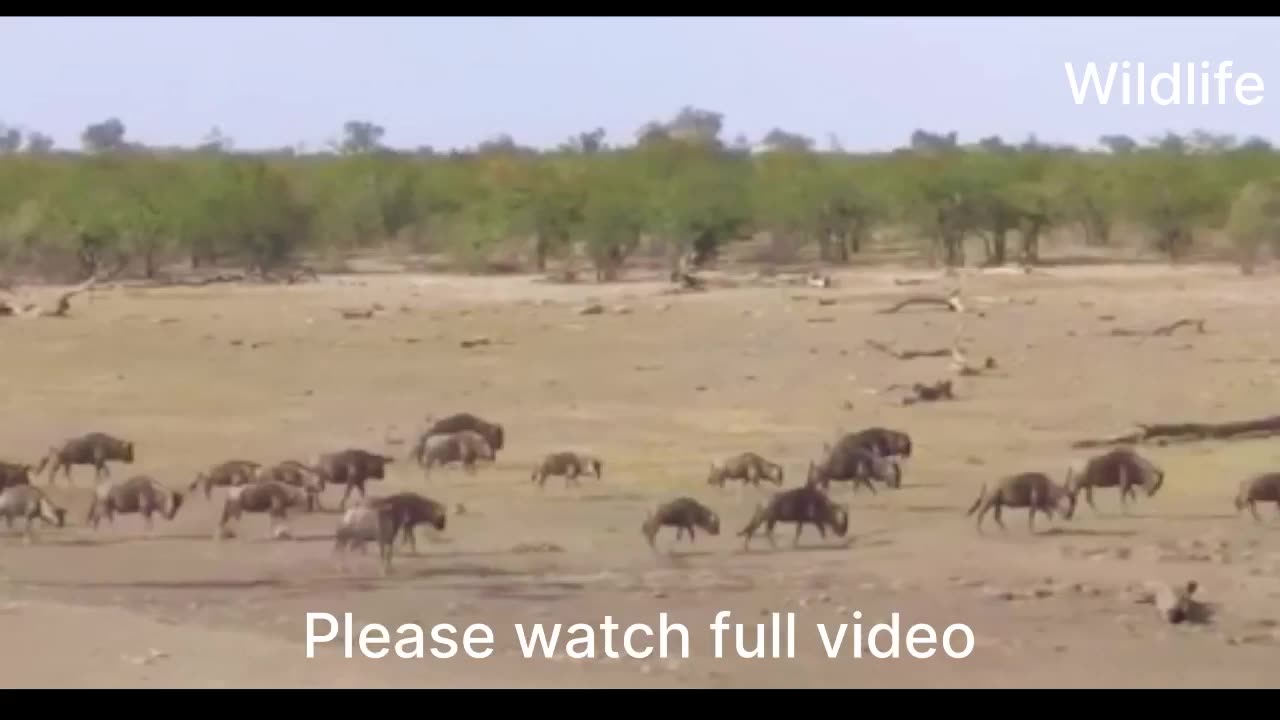Premium Only Content

"Untamed Wonders: A Journey into the World of Anim
Animal wildlife refers to the diverse and fascinating array of creatures that inhabit natural ecosystems across the globe. These animals have evolved over millions of years to adapt to their specific environments, displaying an incredible range of characteristics, behaviors, and adaptations.
Mammals: Mammalian wildlife includes species such as the powerful African elephant, the agile cheetah, the graceful dolphin, and the intelligent chimpanzee. Mammals are known for their warm-blooded nature, fur or hair, and the ability to nurse their young with milk.
Birds: Avian wildlife encompasses a vast array of species, from the majestic bald eagle and the melodious nightingale to the agile peregrine falcon and the colorful toucan. Birds are known for their feathers, beaks, and remarkable ability to fly.
Reptiles: Reptilian wildlife includes creatures like the fearsome Komodo dragon, the ancient sea turtle, the cryptic chameleon, and the enigmatic python. Reptiles are characterized by scales and cold-blooded physiology.
Amphibians: Amphibian wildlife comprises animals like the vibrant poison dart frog, the burrowing salamander, the croaking frog, and the secretive newt. Amphibians are known for their dual life stages, typically starting as aquatic larvae and transitioning to terrestrial adults.
Fish: Aquatic wildlife boasts an incredible diversity of fish species, from the mighty great white shark and the elusive coelacanth to the colorful clownfish and the powerful sailfish. Fish exhibit a wide range of body shapes and adaptations for life in water.
Insects: Insect wildlife is the most diverse group of animals on Earth, with millions of species yet to be discovered. This group includes pollinators like honeybees and butterflies, as well as predators like praying mantises and ladybugs.
Marine Life: The oceans teem with marine wildlife, from the enormous blue whale and the playful bottlenose dolphin to the intricate coral polyps and the elusive giant squid. Marine creatures exhibit a variety of adaptations for life in the sea, from streamlined bodies to bioluminescence.
These diverse and remarkable animals are integral parts of their ecosystems, contributing to ecological balance and often serving as indicators of environmental health. The conservation of animal wildlife is crucial to preserving biodiversity, sustaining ecosystems, and ensuring a healthy planet for future generations. Efforts to protect and conserve these species involve addressing threats such as habitat destruction, climate change, pollution, and illegal wildlife trade
-
 1:29:31
1:29:31
Glenn Greenwald
4 hours agoGermany's Repressive Speech Crackdown Intensifies; U.S. & Russia Meet in Saudi Arabia and Open Cooperation; Plus: An Amazing Hate Crime in Florida is Buried | SYSTEM UPDATE #408
37.9K28 -
 1:30:48
1:30:48
Redacted News
5 hours agoBREAKING! TRUMP AND PUTIN NEARING PEACE BUT EUROPEAN WARMONGERS TRYING TO STOP IT | REDACTED
118K199 -
 52:40
52:40
Candace Show Podcast
5 hours agoSaturday Night Lively: What Were They Thinking? | Candace Ep 148
101K113 -
 LIVE
LIVE
Producer Michael
5 hours agoTHE HOTTEST FRAGRANCES FOR 2025!
162 watching -
 18:44
18:44
Clownfish TV
5 days agoHollywood Has a DEI Temper Tantrum!
1.43K6 -
 LIVE
LIVE
The StoneZONE with Roger Stone
1 hour agoRoger Stone Provides Crucial Update On Classified JFK Assassination Docs | The StoneZONE
615 watching -
 1:09:44
1:09:44
Slightly Offensive
2 hours agoALMOST SERIOUS: How Mass Legal Immigration DESTROYED Australia | Guest: Maria Zeee
10.6K1 -
 54:43
54:43
LFA TV
1 day agoTrump vs. Karl-Theodor zu Guttenberg | TRUMPET DAILY 2.18.25 7PM
11.5K3 -
 2:02:21
2:02:21
Revenge of the Cis
6 hours agoEpisode 1449: Boo This
55.7K10 -
 1:20:31
1:20:31
Awaken With JP
7 hours agoWiping Hard Drives, Hire a Criminal Defense Lawyer - LIES Ep 79
95.5K59